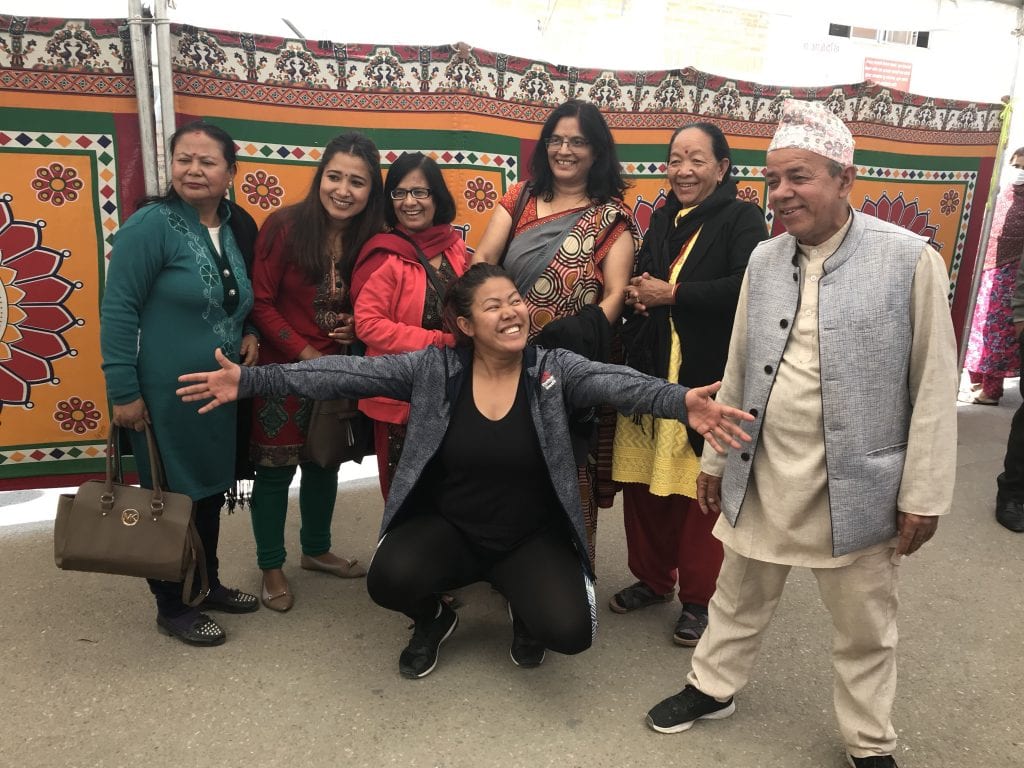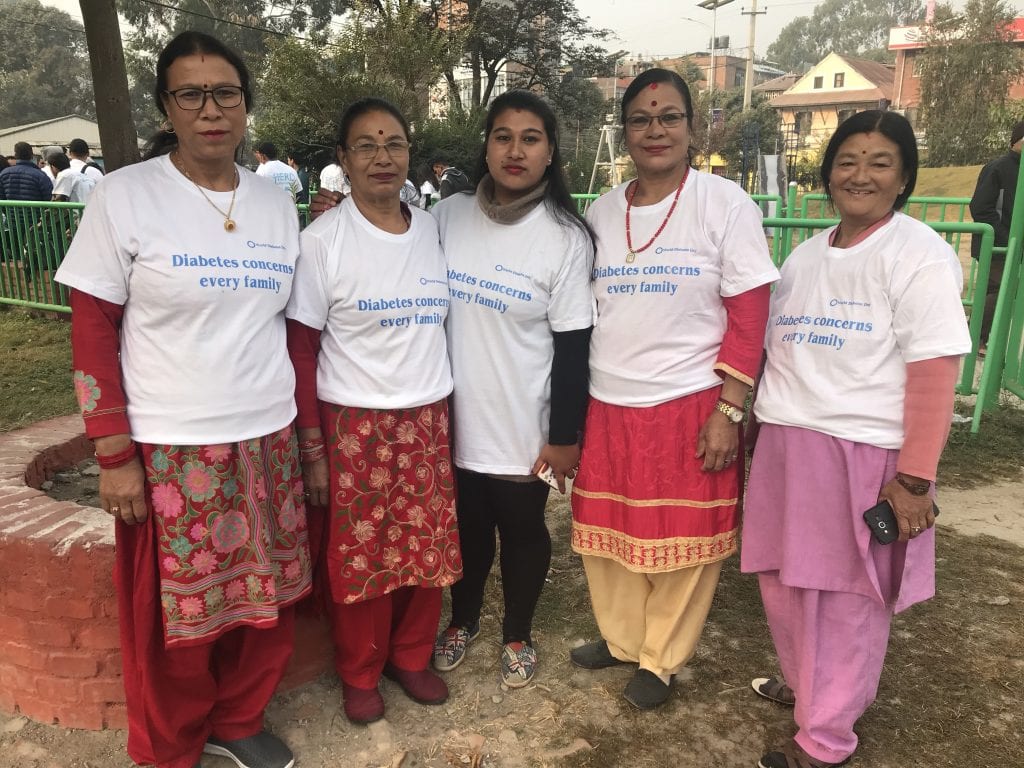‘More than just giving information’: Public engagement and diabetes awareness in Nepal
By Briony Fleming, on 31 January 2019
This Blog has been written by Beacon Bursary awardee Joanna Morrison, for a project working with 10 artists from the Janakpur Women’s Development Centre (JWDC) in rural plains Nepal and researchers from HERD International Nepal, who are conducting research about diabetes and healthy lifestyles.
On arrival in Nepal 16 years ago I was greeted with a “Namaste” from researcher Rajesh*. As we drove through the hilly rice paddies of Nepal, he taught me Nepali language and about Nepali culture. He taught me that if we didn’t find somewhere to eat rice twice a day, it was like we hadn’t eaten at all, and he impressed me with the huge mountains of rice he could eat.

Female workers in a rice field in Nepal
Eating large quantities of rice and having a more sedentary lifestyle, particularly in urban areas, are key drivers of increasing rates of type 2 diabetes in Nepal. Reducing salt, sugar and saturated fat intake, stopping smoking, lowering stress levels and reducing alcohol intake are recommended to prevent diabetes and other non-communicable diseases (WHO, 2014).
Around 96 million adults in South Asia have diabetes, making it the region with the second highest rates of diabetes in the world (Cousins, 2017).
A few years ago, Rajesh was diagnosed with type 2 diabetes. He struggles to pay for regular medication and there are no trained health workers in the rural area where he lives and works. He has to spend time and money travelling to the capital, Kathmandu, for treatment and he is scared about how he will manage if his diabetes gets worse. He didn’t know how to prevent diabetes and family and friends offered conflicting dietary advice.

The team in Nepal
Rajesh is not unusual.
At a large government hospital in Kathmandu, Ms Nani Shova Shakya and Ms Renu Yadav counsel diabetes patients on how to live a healthy lifestyle to manage their diabetes. They see large numbers of men and women who are struggling to manage their diabetes through diet and lifestyle changes, who did not know how they got diabetes. There is an urgent need to increase knowledge and develop cost-effective, evidence-based interventions to prevent type 2 diabetes. I am working with a research organisation, HERD International, and with Nani Shova and her team to plan events which engage the general public and provide information about diabetes prevention and management in an easily understandable way.

The team in Nepal working to share information about Diabetes locally
Our first event was on world diabetes day in November 2018 where we provided free blood glucose testing, Body Mass Index calculation and nutrition counselling to anyone passing through the hospital grounds. To attract and engage people, exercise instructor Ms Preeti Rai led Zumba sessions throughout the day, and Mr Dinesh Deokota created a photo-story exhibit where people could hear the stories of those affected by diabetes, or listen to doctors giving advice.
Our quiz master asked people to vote with their feet, running to the ‘True’ or the ‘False’ areas as he tested their knowledge on diabetes prevention and management. We had art guessing games which demonstrated the symptoms of diabetes, and a voting stand where people could choose their preferred intervention to prevent diabetes. Interestingly only a few people were keen to receive mobile phone messages, or be counselled by their pharmacist, and the winning intervention was volunteer-run community groups which received 42% of the votes.

Man listening to the experience of someone with Diabetes
To design interventions that work, and are likely to be sustained, dialogue with people like Rajesh is essential. Public engagement involves more than just giving information, it promotes discussion, stimulates thinking, and brings people together in collaboration to increase knowledge, motivate behaviour change and promote opportunities to live healthily.
You can see a short video of our World Diabetes Day event below:
*name changed
 Close
Close


